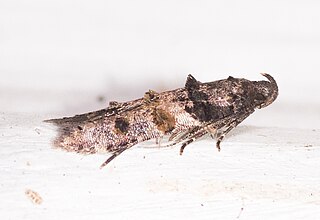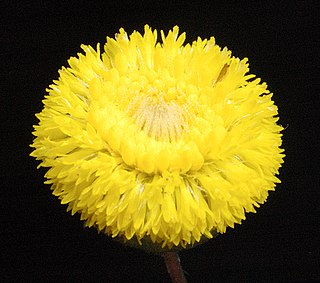
In mathematics, convolution is a mathematical operation on two functions that produces a third function that expresses how the shape of one is modified by the other. The term convolution refers to both the result function and to the process of computing it. It is defined as the integral of the product of the two functions after one is reflected about the y-axis and shifted. The choice of which function is reflected and shifted before the integral does not change the integral result. The integral is evaluated for all values of shift, producing the convolution function.

G, or g, is the seventh letter in the Latin alphabet, used in the modern English alphabet, the alphabets of other western European languages and others worldwide. Its name in English is gee, plural gees.

In physics, engineering and mathematics, the Fourier transform (FT) is an integral transform that converts a function into a form that describes the frequencies present in the original function. The output of the transform is a complex-valued function of frequency. The term Fourier transform refers to both this complex-valued function and the mathematical operation. When a distinction needs to be made the Fourier transform is sometimes called the frequency domain representation of the original function. The Fourier transform is analogous to decomposing the sound of a musical chord into the intensities of its constituent pitches.

In thermodynamics, the Gibbs free energy is a thermodynamic potential that can be used to calculate the maximum amount of work, other than pressure-volume work, that may be performed by a thermodynamically closed system at constant temperature and pressure. It also provides a necessary condition for processes such as chemical reactions that may occur under these conditions. The Gibbs free energy is expressed as

Walshia is a genus of moths in the family Cosmopterigidae.
The Chrysopeleiinae are a subfamily of the Cosmopterigidae, although some authors treat it as a full family, the Chrysopeleiidae.
Walshia albicornella is a moth in the family Cosmopterigidae. It was described by August Busck in 1914. It is found in Panama.
Walshia amorphella is a moth in the family Cosmopterigidae. It was described by James Brackenridge Clemens in 1864. It is found in North America, where it has been recorded from Illinois, Iowa, Kentucky, Minnesota and from Kansas to Texas.
Walshia calcarata is a moth in the family Cosmopterigidae. It was described by Lord Walsingham in 1909. It is found in Mexico.
Walshia detracta is a moth in the family Cosmopterigidae. It was described by Lord Walsingham in 1909. It is found in Mexico.
Walshia dispar is a moth in the family Cosmopterigidae. It was described by Ronald W. Hodges in 1961. It is found in North America, where it has been recorded from Ontario to Virginia.
Walshia elegans is a moth in the family Cosmopterigidae. It was described by Ronald W. Hodges in 1978. It is found in North America, where it has been recorded from Florida, Louisiana, Arkansas, Iowa and West Virginia.
Walshia exemplata is a moth in the family Cosmopterigidae. It was described by Ronald W. Hodges in 1961. It is found in North America, where it has been recorded from Maryland, Arkansas, Indiana, Ohio, West Virginia, South Carolina, Mississippi, Louisiana and Florida.

Walshia miscecolorella, the sweetclover root borer moth, is a moth in the family Cosmopterigidae. It was described by Vactor Tousey Chambers in 1875. It is found in North America, where it has been recorded from southern Canada south to Florida and Texas.
Walshia particornella is a moth in the family Cosmopterigidae. It was described by August Busck in 1919. It is found in North America, where it has been recorded from Maryland, Illinois, Arkansas, Kentucky, Mississippi, Texas and Florida.
Walshia similis is a moth in the family Cosmopterigidae. It was described by Ronald W. Hodges in 1961. It is found in North America, where it has been recorded from Massachusetts, Michigan and from Illinois to South Carolina and Florida.
Walshia floridensis is a moth in the family Cosmopterigidae. It was described by Ronald W. Hodges in 1978. It is found in North America, where it has been recorded from Florida.

Panaetia, a genus in the Asteraceae (daisy) family, was first described by Henri Cassini in 1829 It is considered by Plants of the World Online and the Global Compositae Database to be a synonym of Podolepis Labil,. while GBIF states it as "doubtful". However, in 2021, the Western Australian Herbarium accepted Jeffery Jeanes new circumscription of the genus, together with two species of Panaetia as being found in Western Australia: Panaetia lessonii, and Panaetia tepperi. Jeanes distinguished Panaetia from the genera, Podolepis, Siemssenia and Walshia, using the following characters:
- the outer florets are all tubular; and
- the cypselas are minutely tuberculate and lack long finger-like papillae.

Podolepis lessonii is an erect annual herb native to Western Australia, belonging to the Asteraceae family.






